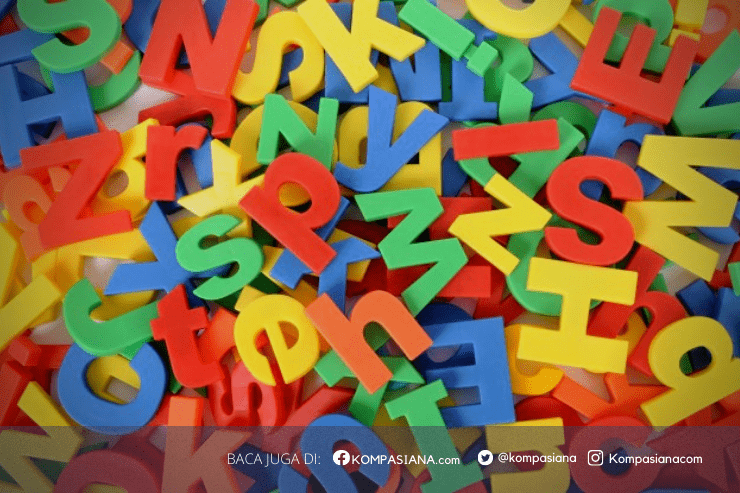[caption id="attachment_43888" align="alignnone" width="300" caption="Majapahit's Heritage: The Penataran Temple, Blitar"][/caption] The rise of the Majapahit Empire in Java was preceded by three important events in the late 13th century. They were the fall of the Singosari Kingdom, the arrival of Kubilai Khan’s military expedition and the fall of Kediri Kingdom. Those historical events had causal relationships and there were complicated stories. It was a vendetta that stimulated King Jayakatwang to attack Singosari. The latter used to be the Tumapel District with an obligation to pay the regular tribute to Kediri. However, Ken Arok disrupted the system when he declared himself as the leader of Tumapel after killing the Chief Tunggul Ametung. His next move was an attack against Kediri which was under the reign of King Kertajaya at that time. The battle of Ganter (ca 1222) inaugurated Ken Arok as an able strategist. Kediri was lost, but the defeat gave birth to the vendetta among the royal members. They waited to strike back at the right time. In early 1290s, a large number of Singosari troops were sent abroad to carry out the Pamalayu Expedition. It was a military expedition aimed at the territorial expansion. In the mind of King Jayakatwang of Kediri, the situation was perceived as the right time to attack Singosari. Therefore, the king decided to attack Singosari and managed to kill King Kertanegara. Singosari was destroyed in 1292. Unfortunately, it seemed that King Jayakatwang underestimated the ability of Wijaya (also known as Nararya Sanggramawijaya) who was the Kertanegara’s son in law. Wijaya was actually the son of Dyah (Lord) Lembu Tal as well as the grandson of Ken Arok. After the fall of Singosari, Wijaya escaped with some of his loyal generals, such as Lembu Sora and Nambi. The Kediri troops did not chase him further and this proved to be a fatal mistake. Wijaya finally crossed the Madura strait and arrived in Sumenep. There, he asked suggestions and requested protection from the Regent Arya Wiraraja. The regent, formerly known as Banyak Wide, originated from Singosari. Although he was related to the fallen Kingdom, Jayakatwang did not regard the regent as the enemy. Perhaps, this was due to Wiraraja's political skill in positioning himself in the conflict between Kediri and Singosari. On the other hand, Wijaya respected the regent as a senior knight of the Singosari dynasty. Therefore, when Wijaya asked suggestions from Wiraraja, the exiled Singosari knight believed in the wisdom of his senior. Arya Wiraraja suggested Wijaya to declare loyalty to Kediri as a tactic. Later, Wijaya did go to Kediri to pay a tribute and ask permission to establish a settlement in Terik or Tarik which was a name of a hamlet at today Mojokerto, East Java. Jayakatwang granted the land. Later, Wijaya and his followers developed the hamlet and that attracted more Singosari loyalists came to the area. Nambi and Lembu Sora added Wijaya’s power since they were followed by numerous reliable soldiers from the former Singosari. Moreover, Ranggalawe who was also known as an able military leader decided to join Wijaya. The history went on. Wijaya later conceived a plan to attack Kediri as a revenge, but he waited the right momentum. Coincidentally, Kubilai Khan who governed China under the Yuan Dynasty sent thousands of troops to “punish” Singosari. The Khan was angry with Singosari after King Kertanegara cut an ear of Meng Chi who was the Khan’s special envoy. Kertanegara did it because Meng Chi carried the Khan’s letter saying that Singosari had to obey Kubilai Khan and pay a regular tribute as an act of submission. When Kubilai Khan’s troops arrived in Java, they did not really know the true facts concerning the power transition between Singosari and Kediri. Therefore, Wijaya manipulated this advantage to carry out his revenge. He sent a message to Kau Hsing, Shih-Pi and Ike Mese who led the troops saying that the capital of Singosari was moved to Kediri. Wijaya also proposed to support the foreign invaders in their efforts. The Khan’s generals believed the story and accepted the proposal. They prepared a joint attack with Wijaya. At the same time, Wijaya devised a stratagem to expel Khan’s troops. He knew very well that the Khan’s mission was aimed at subjugating Java. It was just a continuation of Meng Chi’s mission. Therefore, he thought of “sending a message” to the Khan saying that the Khan had no rights in Java and any military attempts to attack Java would be met with the deadly force. In short, King Jayakatwang and Prime Minister Kebo Mundarang of Kediri were overwhelmed by the combination of troops led by Wijaya, Lembu Sora, Nambi, Ranggalawe and the Chinese troops of the Yuan Dynasty. The battle took place in 1293 (Lombard (Book 2), 2005: 36). Finally, Kediri fell and it marked the beginning of Wijaya’s glory. Unlike Wijaya’s troops who stayed in alert amid the victory, the foreigners were careless. They had parties to celebrate the victory. In this case, they fell into Wijaya’s stratagem. It is said that Wijaya and his loyal followers attacked the Chinese when they were still in the mood for parties after defeating Kediri. Consequently, Wijaya’s adversaries were not ready. Khan’s troops could not consolidate themselves. Fierce battles took place and the foreigners finally fled in disorder. A large number of Khan’s soldiers recruited from Hokkian, Kiang Si and Hukuang (Setiono, 1995 [http://www.inti.or.id] last viewed on 26 June 2009) went back to China for good. On the other hand, the existing narratives tell that numerous soldiers decided to live in Java and this marked another phase of the arrival of Chinese immigrants in Java during that period. In my humble opinion, Wijaya’s success in expelling Kubilai Khan’s expedition was due to: 1) Wijaya’s ability in using the elements of surprise and deception which are also common in today armed conflicts. 2) Wijaya’s superiority in the use of intelligence and counter intelligence. The fact that Kubilai Khan’s generals did not have sufficient intels concerning the real development in the relationship of Kediri-Singosari showed an ultimate weakness whereas Mongolians as well as Chinese were always regarded as the superiors in the practices. Moreover, Sun Tzu theorized the use of intelligence in his 13th Chapter of his “Art of War” centuries before Wijaya was born. 3) Kubilai Khan’s generals had definitely underestimated the ability of Wijaya as the son of Dyah Lembu Tal as well as the grandchild of Ken Arok of Singosari. It was common that a member of the royal family was equipped with martial arts training (Pencak Silat), military training and Javanese values of chivalry. It is recorded in the history that Wijaya succeeded in developing Tarik and turning the hamlet into the capital of the Majapahit Empire. The Empire exercised the power over most regions of today Indonesia. During his reign and his successors’, the Chinese forces never came back to the regions with a view to carry out a territorial expansion. In 15th century, China sent a naval expedition under the command of Admiral Zheng He. The admiral was a Moslem serving the Ming Dinasty (Setiono, 1995 [http://www.inti.or.id] last viewed on 26 June 2009). Unlike the Khan’s, this was a peaceful expedition. This was why numerous temples were developed in Java as the tributes for Zheng He’s friendly mission (Lombard (Book 2), 2005: 269, 286 and 330). Although Wijaya is known as the founder of Majapahit, Gajah Mada is more popular among Indonesians. Gajah Mada was the Prime Minister of Majapahit during the reign of the Queen Tribhuwana Tunggadewi and the King Hayam Wuruk. It is true that Gajah Mada’s contribution to the unity of the Majapahit’s regions which were approximately similar to today Indonesia’s was great. However, Gajah Mada was inaugurated as the Prime Minister when Majapahit’s system of governance was already in its optimum level (Lombard (Book 3), 2005: 16). Besides, Gajah Mada remains a controversial character in Indonesia history due to his debatable role in the battle of Bubat and fierce approaches in solving regional issues. Therefore, I am wondering why Gajah Mada is declared as a "hero" of Indonesia, whereas Wijaya who founded Majapahit, deterred the foreigners’ (Mongol-China) desire for the territorial expansion and gave foundations to the system of governance in the Majapahit Empire has never been regarded as a "hero". Do we realize that Gajah Mada would not have been a prime minister if Wijaya had not established the Majapahit Empire? Do we realize that Wijaya’s relation with Majapahit is equal to a journey from zero (the fall of Singosari) to hero (the rise of Majapahit)?










